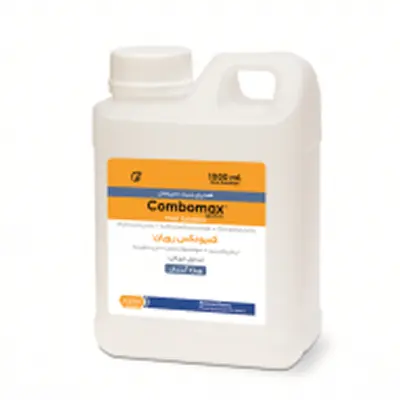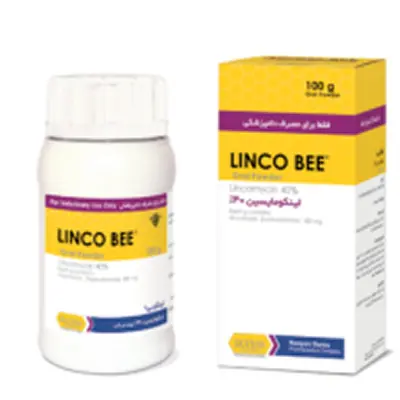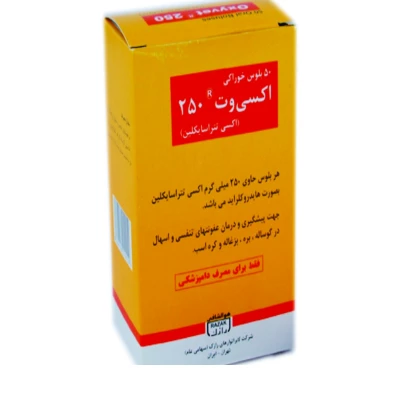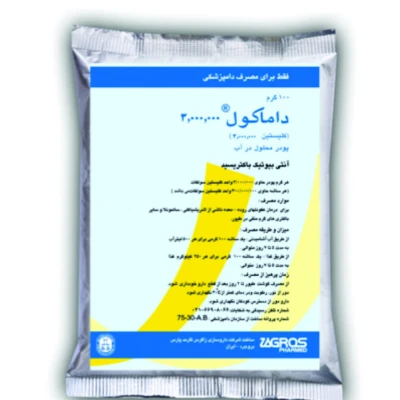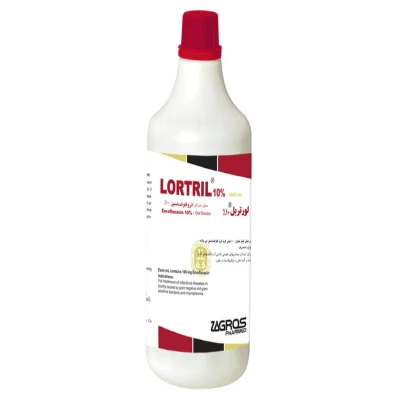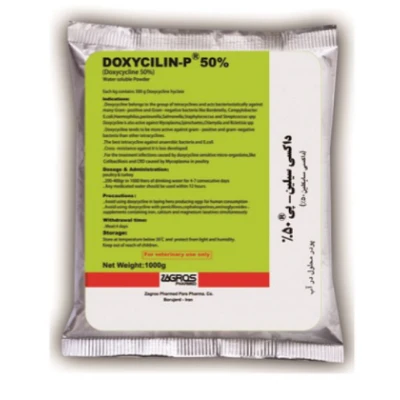کمبومکس رویان

Type of medicine

Target species

Download product catalog

Packaging
Available in 100 ml, 200 ml, 500 ml, 1 liter, and 2 liter bottles (Typically made of HDPE or PET plastic, or amber glass for light-sensitive formulations)

Compounds
| Component | Amount per Liter | Function |
|---|---|---|
| Erythromycin | 100 g | Macrolide antibiotic – inhibits protein synthesis |
| Sulfamethoxazole | 100 g | Sulfonamide – inhibits folic acid synthesis |
| Trimethoprim | 20 g | Dihydrofolate reductase inhibitor – potentiates sulfonamide |

Mechanism of the Effect
This product, by harnessing the synergistic effect of three antibiotics, forms an exceptionally potent combination for treating infections caused by multiple bacterial agents—a common occurrence in aquatic environments.
Erythromycin is a macrolide antibiotic that reversibly binds to the 50S ribosomal subunit, inhibiting bacterial protein synthesis. It is bacteriostatic, but at higher concentrations, it may exhibit bactericidal activity. After oral administration, it is rapidly absorbed from the gastrointestinal tract and widely distributed throughout tissues, cavities, and body fluids. Its antimicrobial activity increases with pH, reaching peak efficacy at pH 8. It is primarily excreted via bile, with minor urinary elimination.
Sulfamethoxazole, like other synthetic sulfonamides, acts as an antimicrobial agent by competing with para-aminobenzoic acid (PABA) in the folic acid synthesis pathway. Since most bacteria synthesize folic acid de novo (unlike animal cells), sulfonamides selectively inhibit bacterial growth. By blocking early steps in folate synthesis, they prevent the formation of purine and thymidine precursors, essential for DNA replication. Sulfonamides alone are bacteriostatic.
Trimethoprim, a diaminopyrimidine derivative, inhibits dihydrofolate reductase, preventing the formation of tetrahydrofolate, the active form of folic acid. When combined with sulfonamides, it produces a synergistic bactericidal effect by targeting two sequential steps in the same metabolic pathway. This synergy allows for lower dosing, enhanced efficacy, and reduced toxicity.

Use case
Fish and Shrimp – Indications: Used for the treatment and prevention of infections caused by Vibrio, Aeromonas, and Pseudomonas species, including:
Septicemia
Enteritis and gastritis
Hepatic necrosis
Fin rot
Gill swelling
Petechial hemorrhages in the gills, skin, and gastrointestinal tract

The amount and how to use
Species / Stage Dosage
Fish fingerlings 50 ml per ton of biomass
Shrimp larvae (3–8 g) 40–50 ml per ton of biomass
Fish over 50 g 30–40 ml per ton of biomass
Rainbow trout Up to 1 liter per 3–5 tons of biomass (as advised by a veterinarian)
Duration: Administer the above dosages continuously for 5 to 7 days.

Caution
Mix thoroughly with feed before administration.
It is recommended to premix the required amount of medication with 5 to 10 times its weight in feed using an oily or gelatinous medium, then blend this premix into the total feed batch.
For use in aquatic animals only.
Keep out of reach of children.

Drug interference
Drug Interactions – Contraindications:
Do not administer concurrently with lincomycin or clindamycin, as these antibiotics compete for the same ribosomal binding site (50S subunit), leading to antagonistic effects and reduced efficacy.
Incompatible with hydrocortisone and tetracyclines, due to potential chemical instability or reduced antimicrobial activity when combined

Maintenance conditions
Storage Conditions: Store in a cool, dry place, at a temperature below 25°C, and protected from direct sunlight.
